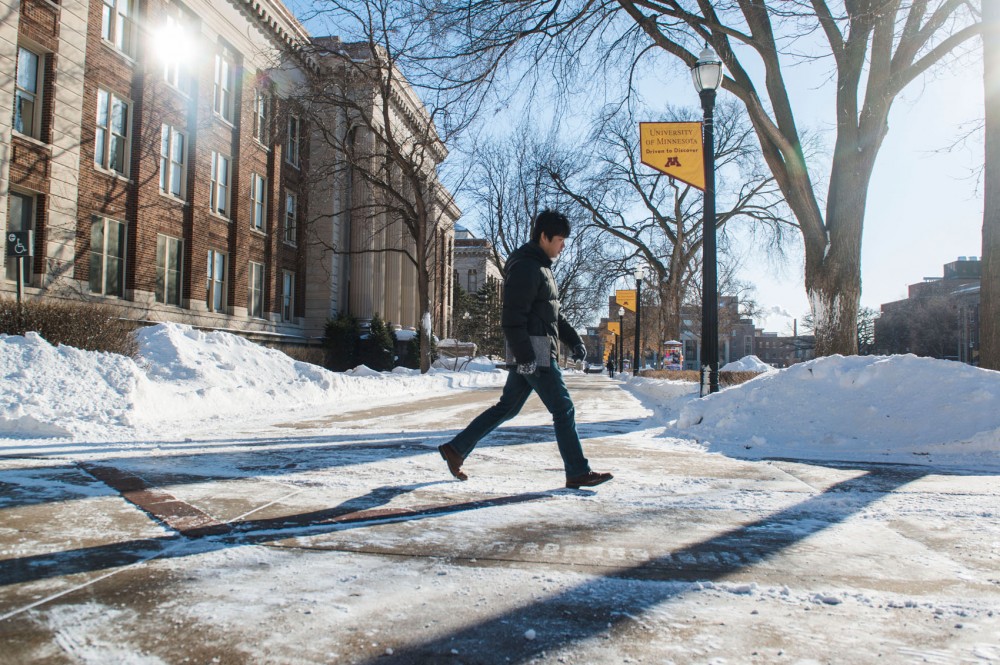Despite class cancellations last week, some University of Minnesota employees still had to go to work.
Administrators canceled class for faculty and students last Monday and Tuesday due to extreme cold weather. But the University stayed open, which left some employees upset.
“They saw it as a message that staff safety and concerns are not taken into account,” said Cherrene Horazuk, president of the University of Minnesota Clerical Workers union.
Vice President for University Services Pam Wheelock said that because the institution has a high value to the state, closing its doors has consequences.
“We take our responsibly as one of the state’s largest employers seriously,” she said. “Our expectation is that people will come and do their job and advance the work of the institution.”
University policy calls for closure when there’s a “serious risk to the health, safety, or security of the University community.” It doesn’t include how cold temperatures must be before the institution closes completely.
Administrators decide to cancel classes or close the entire University on a case-by-case basis, Wheelock said.
Horazuk said the policy is too vague and deserves revision to include factors like the safety of staff members.
She said many staff members reported complaints to the University’s American Federation of State, County and Municipal Employees chapter last week about having to commute to work in extreme conditions and having to use vacation time to stay home.
In an email to the University community about the class cancellations, University President Eric Kaler asked managers to be accommodating and respect some employees’ need to take time off due to the weather.
But Horazuk said it may be difficult for hourly staff to take time off if they have already used their paid vacation time.
“They were put in a situation on the coldest days imaginable that they either came to work or they didn’t get paid,” she said.
Wheelock said when deciding to cancel class or close the school, the University considers the distance employees and students travel once they’re on campus.
Students spend more time outside, she said, while employees typically stay in one place throughout their
workday.
“You might have to move from your parking lot to the place of your work, but you’re not going to have to consistently move around campus in the cold,” Wheelock
said.
The decision to close the University entirely carries a lot of weight, she said, because the institution provides many services people rely on.
“Realistically, there are patients receiving care here, there are buildings that have to stay up and running,” Wheelock said. “This is a big place that does a lot of different things.”
AFSCME plans to discuss employee safety issues with University officials at a labor relations meeting later this month, Horazuk said.


